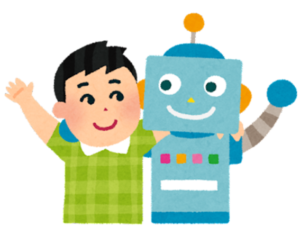Note: This blog post was originally written in Japanese for our Japanese website. We used our machine translation platform Translation Designer to translate it and post-edit the content in English. The original Japanese post can be found here.
"How can we save money for translation while maintaining quality?"
"There's so many revisions to make to the machine translation output. Is there an easier way to handle this?"
For those who have questions regarding translation requests, this post is a must-read. Whether you have been doing business with translation companies or don't have any experience using professional translation services, we'd like everyone to learn more about what kind of services translation companies can provide.
We will go over the following two commonly asked questions in this post!
| Q1. Can you maintain a certain level of quality for translation while keeping the costs low? Q2. We always end up having to revise a lot of the machine translation output. Is there a better way to approach this? |

Q1. Can you maintain a certain level of quality for translation while keeping the costs low?
| A1. By post-editing a machine translation output in a way that meets the minimum expected quality, you can keep the translation cost low while maintaining the quality. |
Post-editing is a manual process of correcting the output of machine translation to bring the quality closer to that of a translation done by humans.
Many customers have requests like this question. It might be a situation where you suddenly need a translation but can't allocate enough budget and want to make it as low-cost as possible, or you have to allocate the cost elsewhere and cannot spend as much as before on regular translation projects. Circumstances vary depending on each customer, but the goal is the same -- reducing the cost.
In our previous posts, we have introduced machine translation and post-editing work as ways to reduce costs. What can we do more if there is a request to maintain the quality to a certain extent in addition to keeping the cost down?

Post-editing is a service that offers great advantages in terms of cost and turnaround time, but you can also adjust the quality to some extent. Even so, it is a service that utilizes the machine translation output as much as possible and is inferior to human translation in terms of quality. However, there are different levels of post-editing quality that you can choose from to meet your request. Post-editing work consists of correcting machine translation errors, but to achieve higher quality, you can also add the following items to your checklist.
| ・Conducting research for industry-specific terminology ・Checking consistency for terms if a glossary is provided ・Matching the overall writing style ・Revising to improve readability |
For example, if research on technical terms is unnecessary, the editor will use the machine translation output as is if the meaning is correct in general. Also, if matching the overall writing style is unnecessary, the editor will not correct sentences even if there's a mixture of tones and inconsistencies in notation.
Of course, we can customize the checklist if there are other requests than the above. This flexibility allows you to choose the quality you aim for. Basically, quality and cost are in a proportional relationship, and the higher the quality, the higher the cost. Therefore, the more items you have in the checklist, the higher the cost becomes. This means the benefits of reducing cost and shortening the turnaround time become smaller.
To achieve the goal of reducing cost, it is better to decide from the viewpoint of which check items should be prioritized. By doing so, you can take advantage of the benefits of post-editing services and obtain the desired quality to some extent.
Q2. We always end up having to revise a lot of the machine translation output. Is there a better way to approach this?
| A2. By customizing the machine translation engine, it is possible to reduce the effort of correction. |
As you know, the improvement in accuracy of machine translation is remarkable, and it is now being introduced and actively used by many companies. Compared to a decade ago, translation results are so fluent that some people may think that machine translation alone is enough.
Having said that, machine translation may still contain errors, and using the output of machine translation as it is involves risks. In most cases, the machine translation output is used as a rough translation, making corrections before actually using it.

Although we can all agree some corrections are necessary, is there a way to make the process a little more efficient? If you feel that there are many corrections to make, they probably fall into either of the following two patterns.
1. Many terminology corrections and consuming time
When you use machine translation, general terminology is usually used even for technical terms in the machine translation output. If there are specific terms used within your company, you end up changing the terms one by one to match your company's terminology.
In such cases, one way to reduce the time and effort of correcting terms is to apply a glossary to machine translation and perform replacement processing when a corresponding term appears. By using this method, you can replace all the relevant terms with your specified terms, so you can reduce the effort of correcting terms.

However, it should be noted that if you include a general term in your glossary, some parts may be translated unintentionally due to being automatically replaced. Therefore, it is necessary to narrow down the terms as much as possible. We recommend sticking to proper nouns such as product names and other technical terms. Also, if you include a lot of terms in your glossary, the accuracy of the machine translation itself will decrease, so you need to be careful when adding terms.
2. Lots of correction work to match the company's writing style
Machine translation often gives an output in a general-purpose expression, and you may find it different from the wording used in your company. It is difficult to specify and replace writing styles by applying a glossary as described above.
In such cases, there is a way to customize the machine translation engine and generate an engine specifically for your company. To do this, you'll need bilingual data (i.e., a set of original text and translated text) to train the engine. Although a certain amount of data is required, if you customize the engine using that data, you will be able to obtain an output that matches the writing style that is used in your company. This will reduce the trouble of making corrections.

Kawamura's translation services
Kawamura International offers various solutions to effectively use machine translation engines. In addition, we developed a platform so that our customers can easily generate a customized engine and make effective use of their language assets.
If you're looking for solutions using machine translation or post-editing work, we would be happy to support you.
Feel free to reach out to us.
_CMYK_OL.png)

